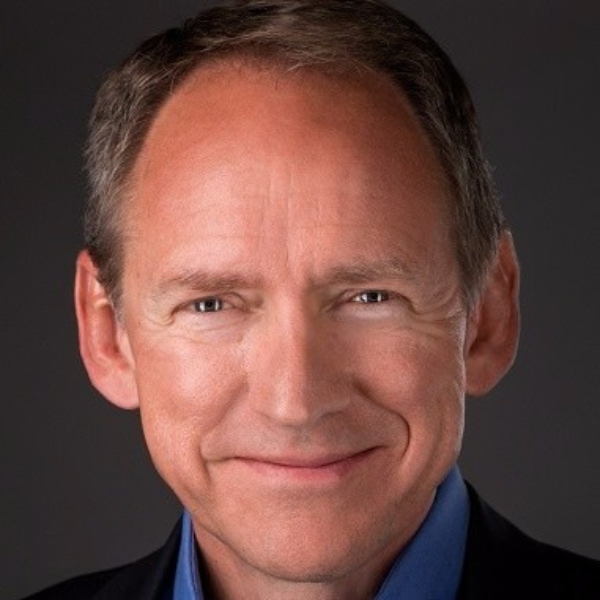Podcast: Play in new window | Download
Subscribe: Spotify | Email | RSS
In this week’s episode of The Leadership Habit Podcast, host Jenn DeWall sat down with Evan Roth, an experienced executive coach, to discuss the interplay between emotional intelligence and energy leadership. This conversation is rich with insights on how leaders can harness these concepts to improve their professional and personal lives. Let’s delve into the key takeaways from this enlightening discussion.
Meet Evan Roth, Executive Coach and Crestcom Subject Matter Expert
Evan Roth is a seasoned executive coach with over 30 years of experience in corporate roles such as Chief Financial Officer, General Manager, and Chief Learning Officer. He has led teams worldwide, including in Mexico, Brazil, Argentina, Holland, the United Kingdom, and the United States. Roth’s coaching focuses on helping executives thrive by building emotional intelligence through the concept of energy leadership.
In addition to these impressive achievements, Evan is one of Crestcom’s esteemed Subject Matter Experts. He is featured on a module about business acumen, bringing his expertise to Crestcom L.E.A.D.R. for Life participants all over the world!
Understanding Emotional Intelligence
Emotional intelligence (EI) is the ability to recognize, understand, and manage our own emotions, as well as recognize, understand, and influence the emotions of others. According to Roth, EI can be broken down into four key components:
- Self-Awareness: Understanding your own emotions.
- Self-Regulation: Managing your own emotions.
- Social Awareness: Recognizing others’ emotions.
- Relationship Management: Influencing others’ emotions effectively.
Roth emphasizes that emotional intelligence is not just about feeling but also about thinking and behavior. He says, “Emotional intelligence is becoming aware of what is happening in our interactions. It’s stepping into the feelings of others, understanding and regulating according to that so that we can have better interactions, better communication, and get to results quicker.”
The Concept of Energy Leadership
Energy leadership, a framework developed by Bruce D. Schneider, involves understanding and managing your energy levels to lead more effectively. Roth explains that there are seven levels of energy, ranging from catabolic (negative) to anabolic (positive). These levels influence how we perceive and respond to various situations.
The Seven Levels of Energy Leadership
Level 1: Victim Energy (I lose)
Thoughts: Helplessness
Feelings: Apathy, Lethargy
Actions: Inaction, Avoidance
Level 2: Conflict Energy (I win, you lose)
Thoughts: Anger, Frustration
Feelings: Aggression, Defiance
Actions: Hostility, Resistance
Level 3: Responsibility Energy (I win, and I hope you do too)
Thoughts: Forgiveness, Cooperation
Feelings: Acceptance, Reconciliation
Actions: Pragmatism, Problem-solving
Level 4: Concern Energy (You win, and I hope I do too)
Thoughts: Compassion, Service
Feelings: Care, Empathy
Actions: Support, Nurturing
Level 5: Reconciliation Energy (We both win)
Thoughts: Opportunity, Synergy
Feelings: Peace, Intuition
Actions: Collaboration, Innovation
Level 6: Synthesis Energy (Everyone always wins)
Thoughts: Connection, Flow
Feelings: Joy, Wisdom
Actions: Effortless Productivity, Intuitive Solutions
Level 7: Absolute Passion (There is no winning or losing, only being)
Thoughts: Objective Thinking, Non-Judgment
Feelings: Absolute Passion, Love
Actions: Creation, Innovation
Practical Application of Energy Leadership in the Workplace
Later in the episode, Evan Roth discusses how emotional intelligence and energy leadership can transform workplace dynamics. When leaders are aware of their energy levels and those of their team members, they can create a more harmonious and productive environment.
5 Steps to Build Emotional Intelligence and Energy Leadership
- Self-Reflection: Regularly check in with your emotions and energy levels.
- Seek Feedback: Encourage honest feedback to uncover blind spots.
- Set Intentions: Define how you want to show up in various situations.
- Practice Empathy: Understand and resonate with the emotions of others.
- Continuous Learning: Engage in activities that enhance emotional intelligence and energy awareness.
Overcoming Challenges
Roth notes that a significant challenge in building emotional intelligence is the discrepancy between perceived and actual self-awareness. While 90% of people believe they are self-aware, only 10% actually are. To bridge this gap, Roth suggests leveraging tools like the Johari Window to uncover blind spots and improve self-regulation.
Managing Catabolic Energy
Catabolic energy (levels 1 and 2) can be particularly detrimental in the workplace, leading to silos, team dysfunction, and poor results. Roth provides practical strategies for managing catabolic energy:
- Acknowledge It: Recognize when you or others are in a catabolic state.
- Shift Focus: Move from a self-centered perspective to a collaborative one.
- Encourage Positivity: Foster a culture of feedback and support.
Evan Roth explains, “When we’re in catabolic energy, we are stuck with myopic self-focus. I like to ask myself, when I’m in one and two, what choices am I missing?”
Where to Find More From Evan Roth
The conversation with Evan Roth on The Leadership Habit Podcast highlights the profound impact of emotional intelligence and energy leadership on personal and professional development. By understanding and managing our emotions and energy levels, we can become more effective leaders and create positive, productive workplaces.
For more insights and to connect with Evan Roth:
- Visit his website: coachevanroth.com
- Connect on LinkedIn: linkedin.com/in/evanjroth
If you want to learn more about how Crestcom L.E.A.D.R. can help your team develop their emotional intelligence, business acumen and more, click HERE to get a free 2-hour Leadership Skills Workshop today!





